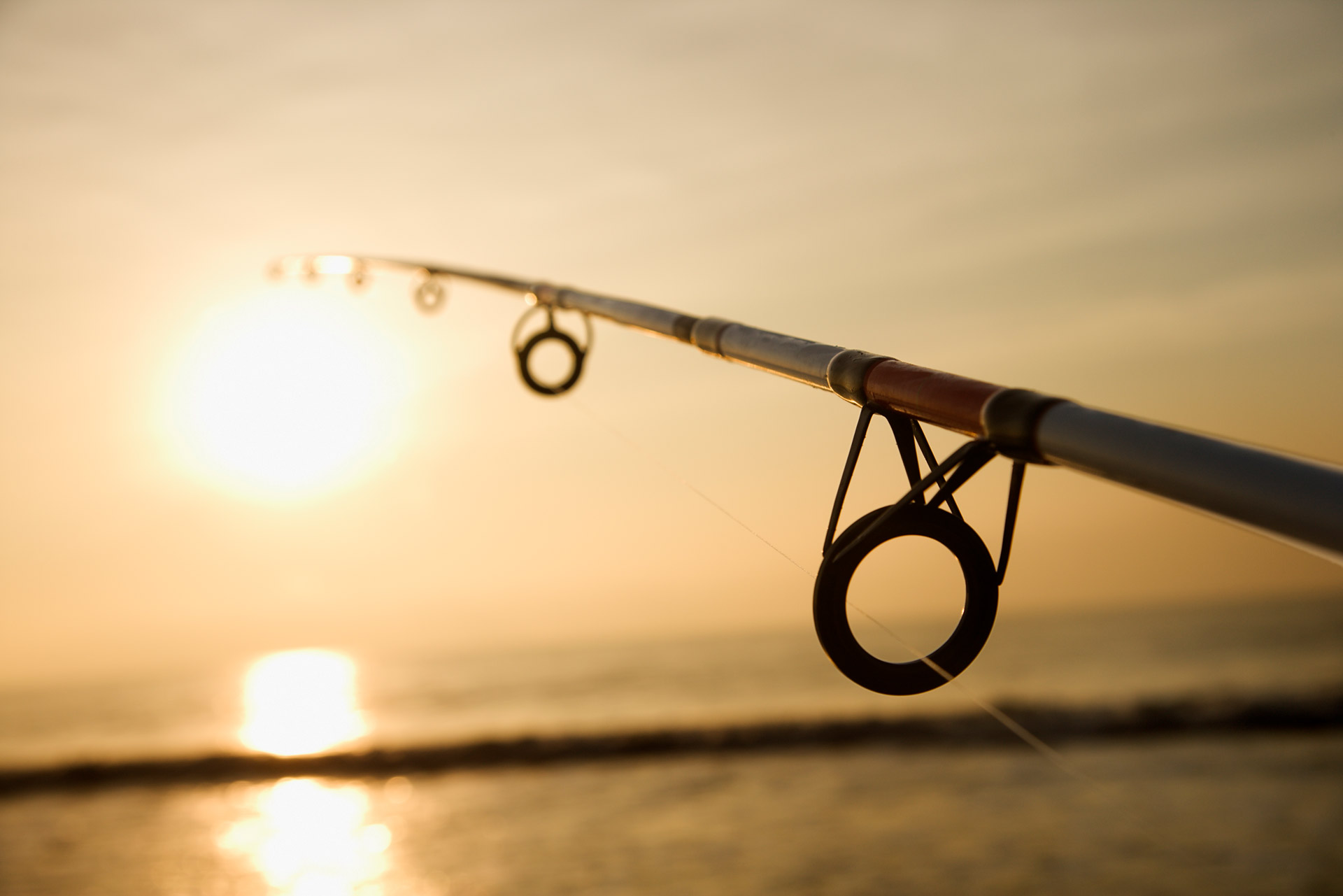Do Trout Have Teeth? How to Handle Your Catch
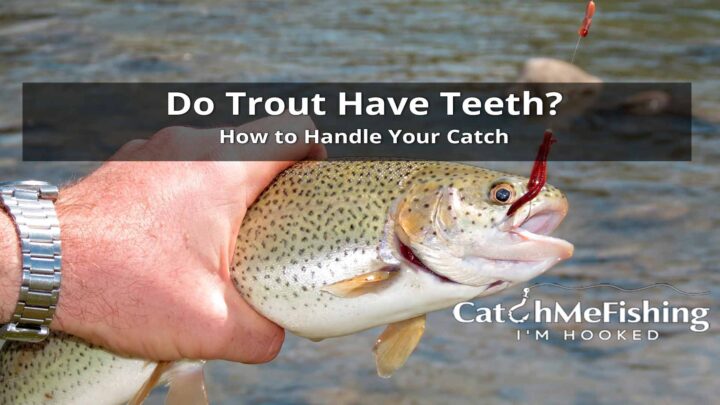
Trout can be a surprisingly intimidating fish to catch, and they are strong and fast. If you are wondering do trout have teeth, they do! Most trout species have vomerine teeth that can do some damage if not handled correctly!
In this article, I answer all of the questions relating to trout teeth plus other features, such as how you should hold and handle them and which type of trout have different teeth.
Do Trout Have Teeth?
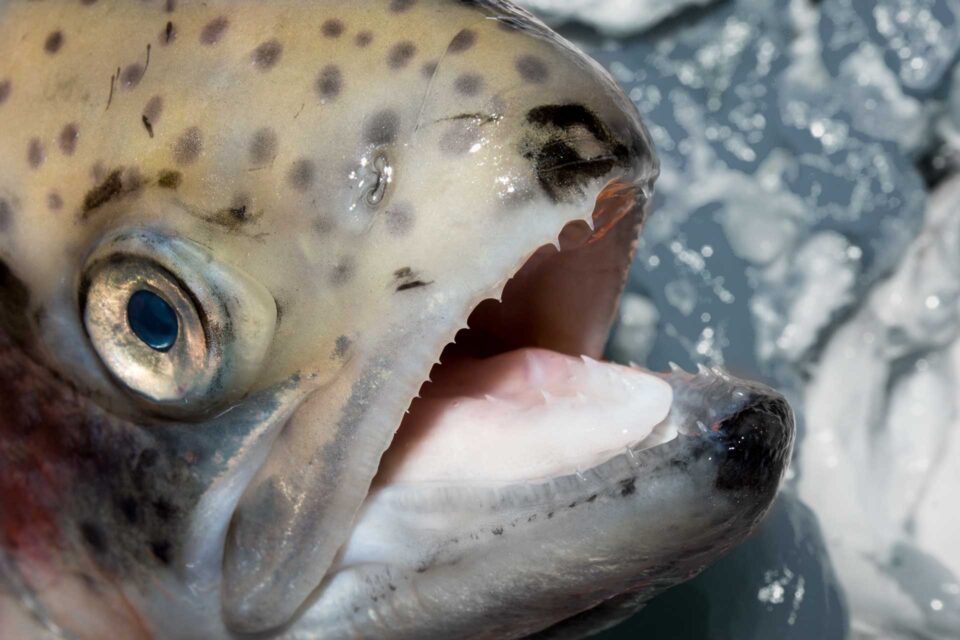
Large trout have strong jaws and can easily bite aggressively and draw blood. Smaller trout also have teeth but are usually small enough not to worry about.
Larger trout have two rows of teeth known as vomerine teeth on the inside roof of the mouth. These teeth are used to hold and move food down the throat of a trout.
When comparing trout to bass, they are vastly different. Bass teeth are located along their lips and they face inwards.
If your trout is over 16 inches, you should think about using hemostats to remove a fly. -You must use forceps or a hook remover to remove the lure or bait the hook in any way.
Type of Teeth on a Trout
Most species of trout have vomerine teeth, which are found in the middle of the upper jaw. These teeth help the fish grab and hold on to the food they are trying to eat in winter.
A great way to recognize a trout from a salmon is to use these teeth. Knowing the position of teeth can also help determine the specific species of these trout.
For example, brown trout have teeth located along the gill and behind the base of the tongue and support the lower tongue. A salmon might have a single row of teeth, whereas a trout would have two.
When a trout is biting and chewing its food, these teeth are helping to break it down. The trouts' jaws act like scissors which helps them cut through the meat they eat.
The teeth also help them filter their prey out of the water while taking care not to swallow any gravel or debris in the river.
Can Trout Bite You?
Most trout species have vomerine teeth located in the middle of their upper jaw, and although they are small, bigger size trout can actually bite and draw blood if handled incorrectly.
Do Rainbow Trout Have Teeth?
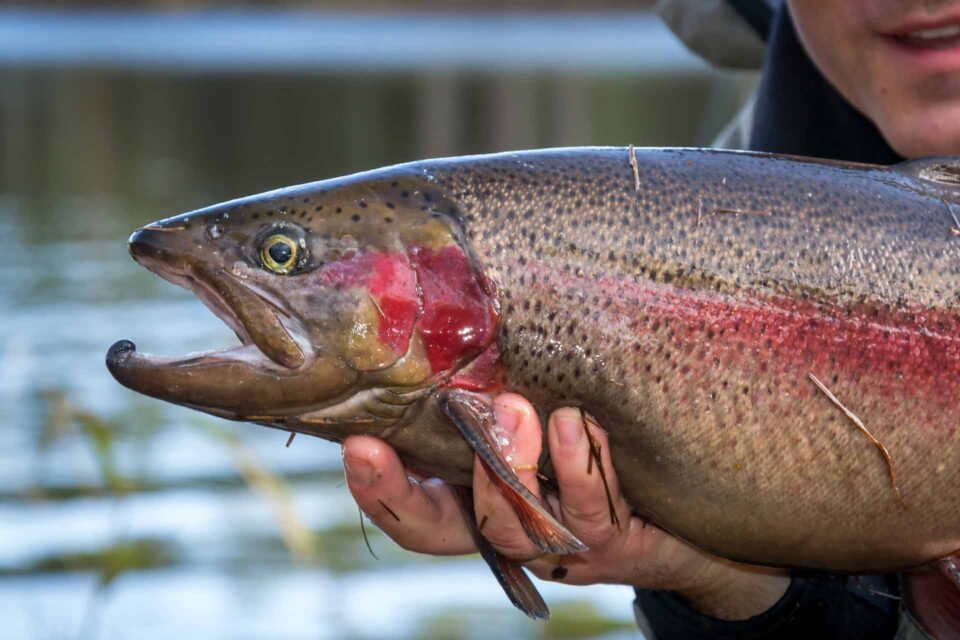
Rainbow trout do have teeth, but they are not as visible because they have a row of thin teeth located in the middle of their upper jaw.
Rainbow trout also do not open their mouth wide while biting and chewing food like brown and brook trout do.
The rainbow trout's teeth help them to eat any small invertebrates. The teeth are there to help them eat their prey.
I would not recommend holding a rainbow trout by its mouth because they have teeth and can bite.
Do Brown Trout Have Teeth?
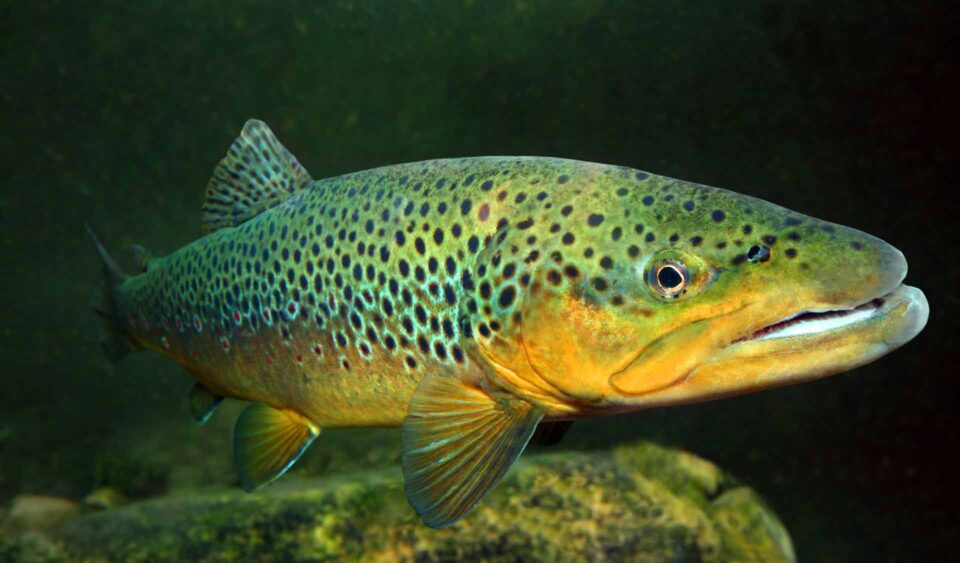
Brown trout (also called a cutthroat trout) has two sets of teeth.
Unlike other trout like the rainbow trout. Brown trouts teeth are below the base of their tongue and also teeth down the length of their gil.
Cutthroat trout...have both sets of teeth in their mouth to help them chew up any food they eat.
A large brown trout's teeth can be as sharp as a pin, so be very careful when handling the trout's mouth.
If your fish is bigger than 15 inches, you might need to use a hemostat tool for removing a fly. This will keep your fingers safe.
Why do trout have sharp teeth?
As trout grow and become bigger, their teeth grow and become sharper. Trout of all sizes have teeth to help them eat their food.
The trout's teeth are there so they can chew up the small invertebrates that they prey on.
When it's time for a trout to feed, these teeth come in handy. They grip and hold the food and move it down their throat as needed.
How to hold a trout
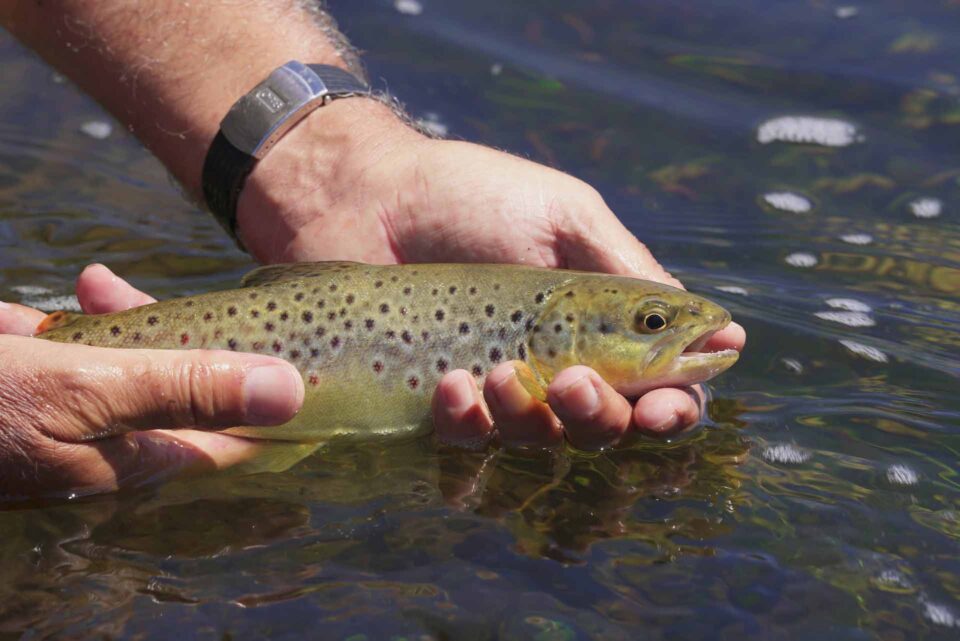
When you hold a trout, be careful not to injure its mouth. If the trout's teeth are sharp, care should be taken when handling them with your hands.
Smaller trout tend to have smaller teeth, so you should handle the trout around the mouth.
I recommend using a hemostat if the trout is bigger than 15 inches in length. The teeth on a large trout can draw blood and cause quite a lot of pain.
Hold the trout in one hand and pull the fly or hook out with a hemostat or set of pliers. This will be fast, protecting your fingers and help get the fish back into the water as fast as possible.
The most common way that someone might injure their hand while holding a trout would be by grabbing the fish around the gills. Being bitten on one of their fingers or thumbs as they bring it out of water for inspection or release the trout back into the water after catching it.
This can happen because some people don't know how to handle this type of fish.
Remember to respect the fish and take precautions, and you will be fine.
Can you lip a trout?
No, I would advise against grabbing a trout by its lip unless it's very, very small and its teeth haven't developed yet. It's just best practice not to lip a trout.
Use both of your hands to hold and support the trout. One hand under the tail and the other under the top end of the body.
Final Thoughts
Be sure to respect the fish and take precautions, so you will not get bitten on one of your fingers or thumbs!
It is best practice to avoid holding it by its lip unless the trout in question is very small with teeth that have yet to develop. Use both hands when supporting and handling a trout, one under the tail and another over the top end of the body.
When catching a large trout, use an extra hand as support and take extra care. Large trout have bigger, more developed teeth.
Use a tool like a set of pliers or a hemostat to remove the hook safely.
I hope you the very best in your trout fishing adventures.



